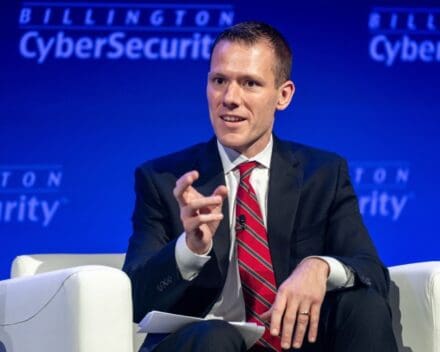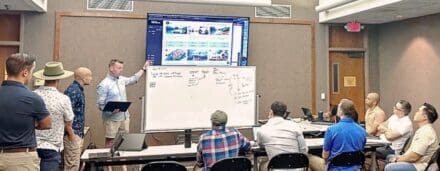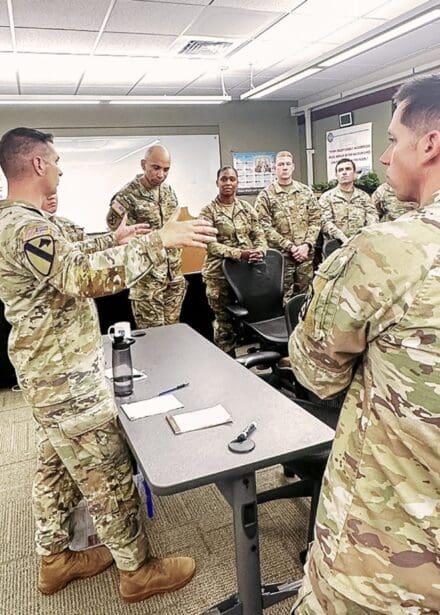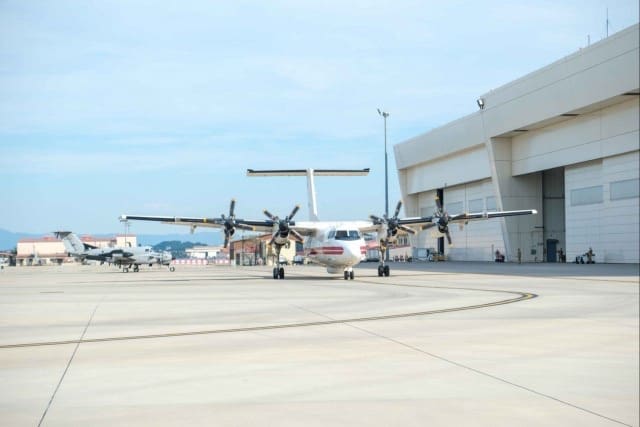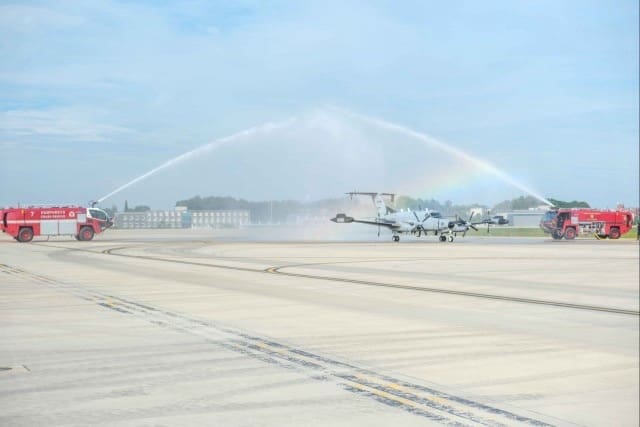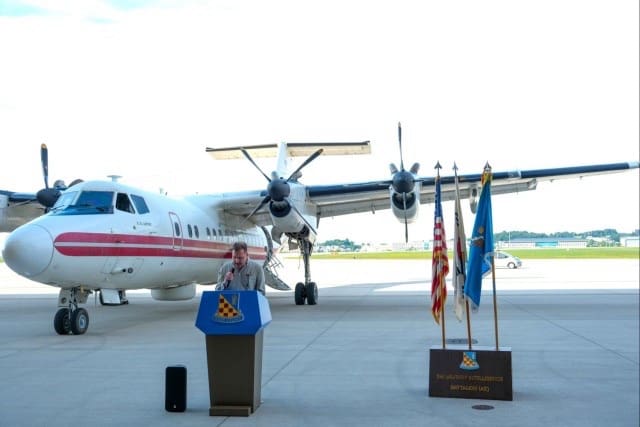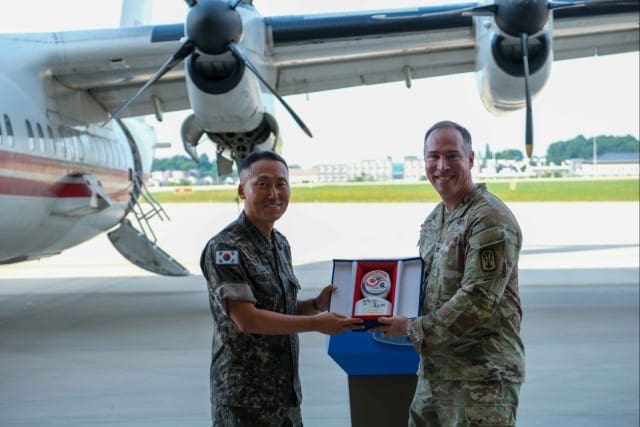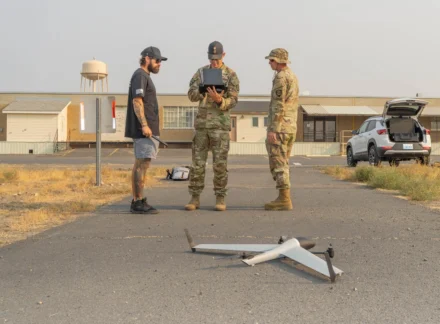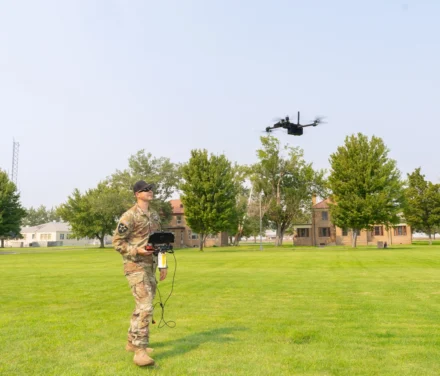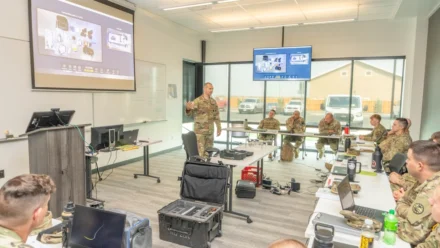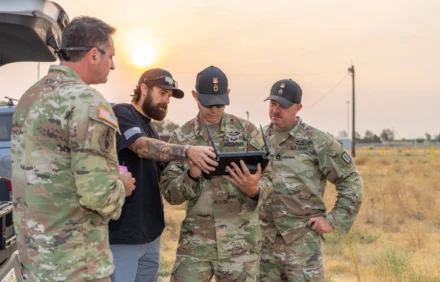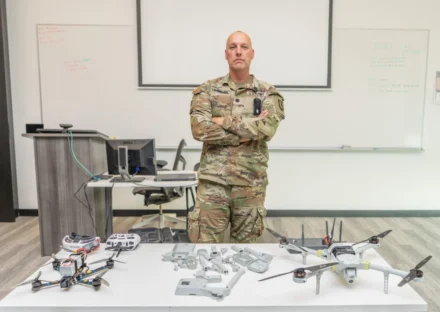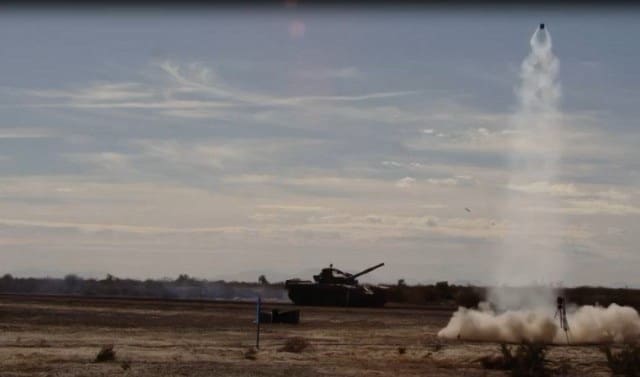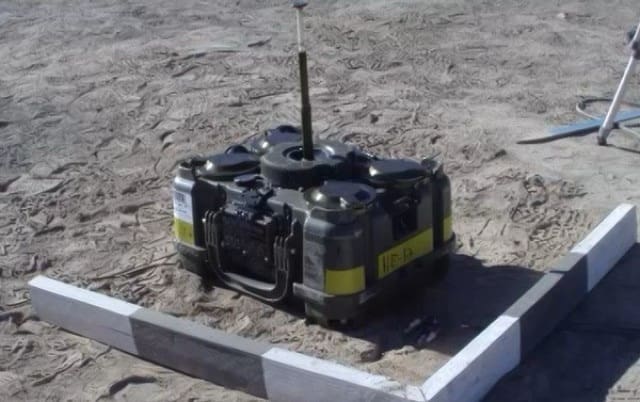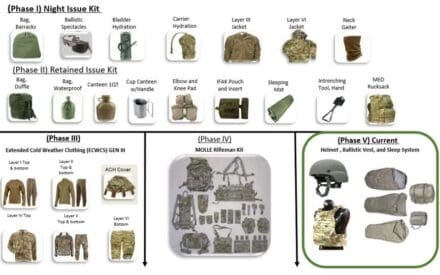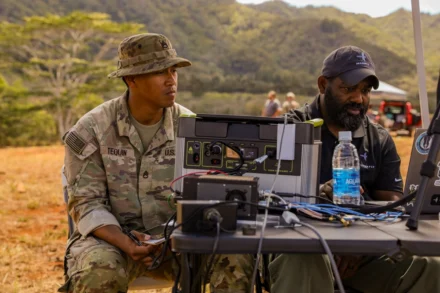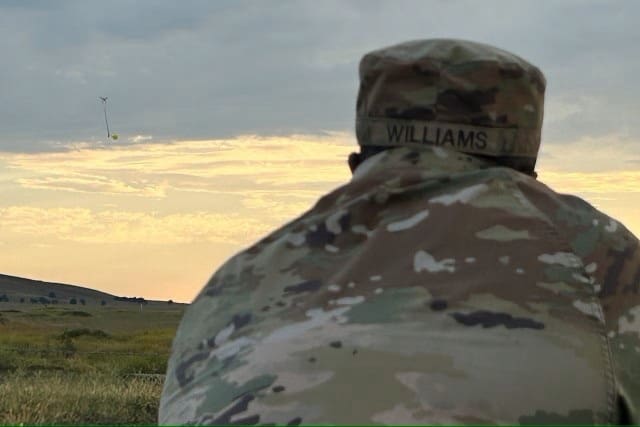
FORT SILL, Okla. — In the subtropical landscape of Fort Sill, those who are up early can often hear a constant buzzing coming from part of the installation. But it’s not their tinnitus acting up, or a swarm of killer bees. That low droning sound is likely coming from the Joint Counter-Small Unmanned Aircraft Systems University.
The school is the War Department’s only joint training center aimed at countering the growing number of aerial threats against U.S. troops and coalition forces. It teaches Soldiers, sailors, airmen and Marines how to operate drone equipment, plan counter-small UAS strategies and train others to defend their comrades from harm.
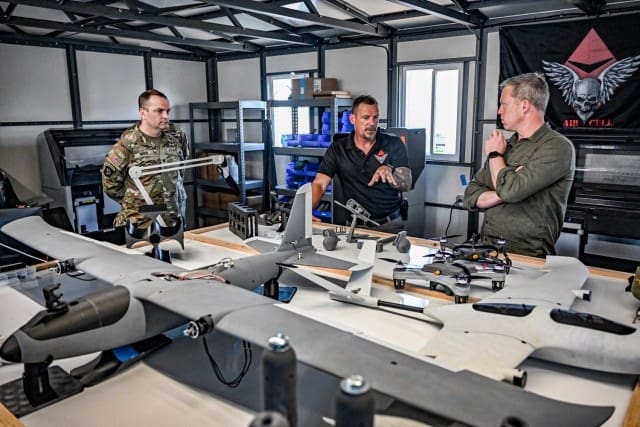
“Coming out of a long period of counterterrorism … we’ve really seen the proliferation of drones [that] we call small-UAS … at low altitudes that have speed and accuracy that we’ve never seen before,” explained Army Lt. Col. John Peterson, JCU director. “That alone has changed the landscape.”
The urgent need to understand how to counter these threats is obvious from the conflicts unfolding in Ukraine, the Middle East and the Indo-Pacific region. Enemy drone tactics, techniques and procedures change almost daily, JCU officials said, leaving experts to constantly search for ways to update their defenses.
“Just understanding how easily these drones can be converted for malicious intent — that was something that was very surprising [to] me,” said Marine Corps 1st Lt. Jacob Ceglenski, JCU student.
Joint Counter-small Unmanned Aircraft Systems (C-sUAS) University Director U.S. Army Lt. Col. John Peterson and JCU Student U.S. Marine Corps 1st Lt. Jacob Ceglenski speak about the JCU at Fort Sill, Oklahoma, Aug. 20-21, 2025. DoW video by U.S. Air Force Staff Sgt. Madelyn Keech.
However, air defense is nothing new to the U.S. military. American short-range air defense has been dominant for decades, so despite the new threats that are persistently cropping up, it’s nothing the U.S. can’t handle.
“For our [counter-small] UAS battle drills, they’re really not any different than anything our air defenders have already been doing,” said Army Sgt. 1st Class Alan Buhl, JCU instructor. “Everyone else is just now learning entry-level air defense doctrine.”
“[We are] making sure that we’re sustaining the training for joint partners,” Peterson said. “That they have the understanding and they’re comfortable using the equipment that they’re being provided.”
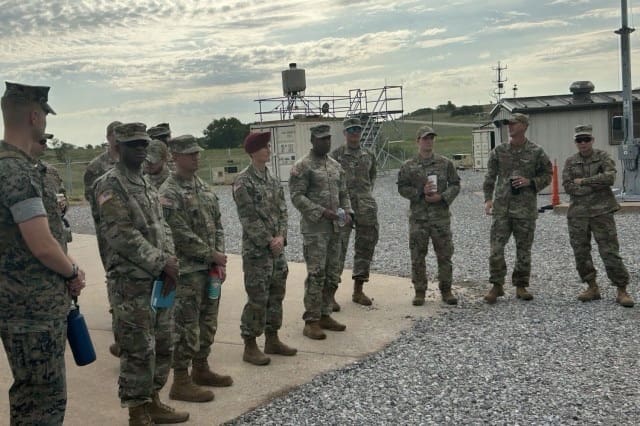
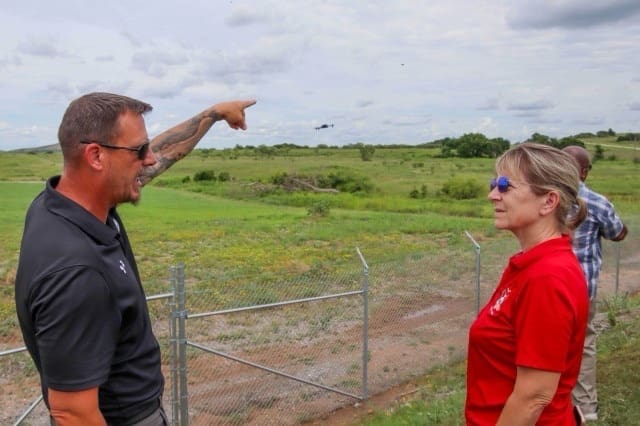
Courses Cover Operation, Planning and Protection
The JCU couples lessons learned in the field with intelligence assessments and other capabilities to give deploying service members the knowledge they need to mitigate ever-changing threats. About 30 experts run the school, which offers three courses that can last from one to three weeks.
The operator’s course goes in-depth to teach service members, most of whom are enlisted, how to use counter-small UAS equipment and understand the technicalities. The planner’s course teaches officers and staff how to place and employ those assets. Those students gain an understanding of U.S. systems and enemy tactics, then develop defensive plans to protect critical capabilities and assets. The installation protection course teaches post leaders how to sharpen their defenses, including how to tell the difference between potential threats and benign hobbyists’ drones.
Each course starts in a joint classroom environment where students from all career fields learn the basics: the types of aircraft they may see downrange, where they come from, how to identify them, and how to employ passive air defense measures, such as aircraft shelters, camouflage to hide assets and dispersion to spread them out.
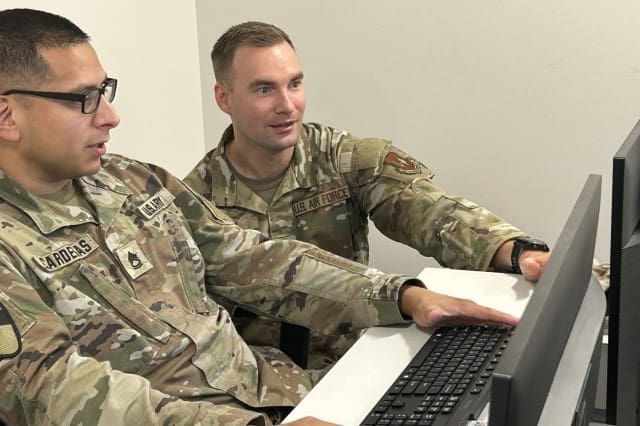
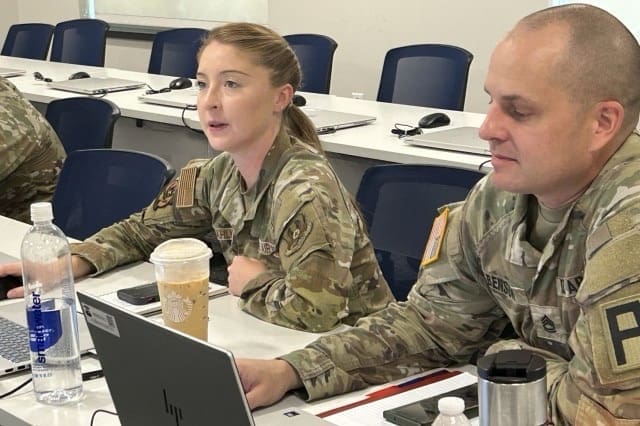
“Looking up in the air — the third dimension — is not a requirement for most jobs in the military. But now everyone — the infantrymen, the artillerymen, the logistician — all have to look up,” explained Army Maj. Dennis “Chip” Stanford, JCU executive officer and a career air defender. “People [have to] adopt the mindset that everything is being observed from multiple angles, and it’s realistically a transparent battlespace.”
After a few days, the classes are split into service-specific tracks. At the JCU’s training range, they’re taught how to operate and maintain various systems and pieces of equipment, depending on what their service uses downrange.
Students also gain an understanding of 24 types of commercial off-the-shelf UASs. Many are known as “blue air” drones, which are used by DOW during operations. Others, known as “red air” aircraft, are used by countries perceived as our enemies.
Air Force Capt. Sarah Dahlke, assigned to Air Forces Central Command Force Protection at Al Udeid Air Base in Qatar, took the planner’s course in August. Approaching the UAS problem from the intel side, Dahlke often monitors aerial threats from a desk, so it’s good for her to see all the various aircraft up close.
“It looks a lot different when you’re out here on the ground, especially when you’re talking about visually identifying things,” she said. “Working in intel, you see all the red [adversary threats], but you don’t really get into the intricacies of the blue side. So, for me, that’s been the most valuable thing.”
All of the students know how important the curriculum is to the current global environment.
“We need to learn, and we need to be able to train people, as well as have knowledgeable planners,” said Army Chief Warrant Officer 2 Jilliene Huffman, air and missile defense systems tactician assigned to the 82nd Airborne Division. “[The 82nd] did just stand up the 3rd Battalion, 4th Air Defense Regiment. They’re going to be one of the first air battalions under a division that has actual counter-UAS systems … which is why it’s important that I came here.”
The Threat Detection Systems
When it comes to students in the operator’s course, there are 15 fixed-site systems they may learn, each of which identifies, tracks and mitigates drone threats using a combination of components.
One of the main fixed-site systems students train on is the Fixed-Site Low, Slow, Small Unmanned Aircraft Integrated Defeat System. It includes components to counter electromagnetic attacks, as well as ground-based radar and an electro-optical/infrared camera that can identify potential threats. The FS-LIDS can detect and even shoot down missiles, school officials said — a scenario students practice during simulations.
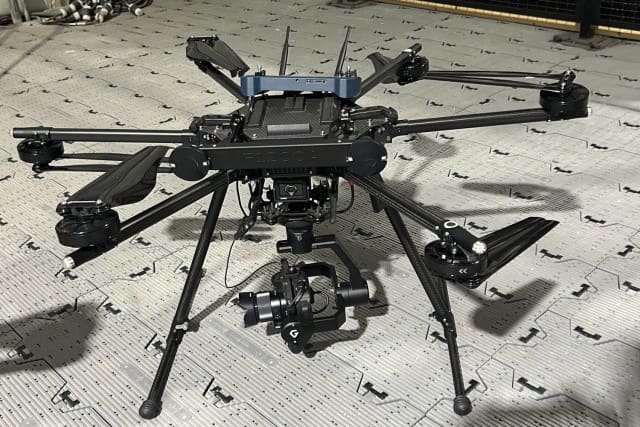
The simulations operate from trailers on the compound that mimic forward operating base command and control centers. Students learn the roles of each player in the room so they can understand the capabilities and limitations of every portion of the process, from the camera systems to the radar and the Forward Area Air Defense System.
“[FAADS] controls everything that’s supposed to happen … from shooting a rocket to electronic warfare,” explained Fred Hill, manager of the JCU operator’s course. “Everything the service member does — how he would do it downrange — he’s going to do it that exact way right here.”
While Army students heavily focus on FS-LIDS, the Navy and Air Force both use a fixed-site system known as a Counter-Remote Control Model Aircraft Integrated Air Defense Network. Other systems taught include the Negation of Improvised Non-State Joint Aerial system, used to counter small UASs; the Drone Restricted Access Using Known Electromagnetic Warfare system; and the Tactical Intelligence Targeting Access Node, a next-generation intelligence ground system.
The culmination of the classes is a joint exercise, during which all the students work together to counter a simulated threat.

JCU Staff: Going Above and Beyond
Before any students can be taught, the JCU staff has to get spun up on each piece of equipment, and commercial partners help with that. To repay the favor, instructors keep manufacturers in the loop on new technology they see on the battlefield so those drone builders can adapt, too.
Many of the staff go above and beyond their daily roles by doing all the flying, maintenance and aircraft development. For example, one staff member has created intricate manuals for each aircraft, while another works with 3D printers to create drones and replacement parts.
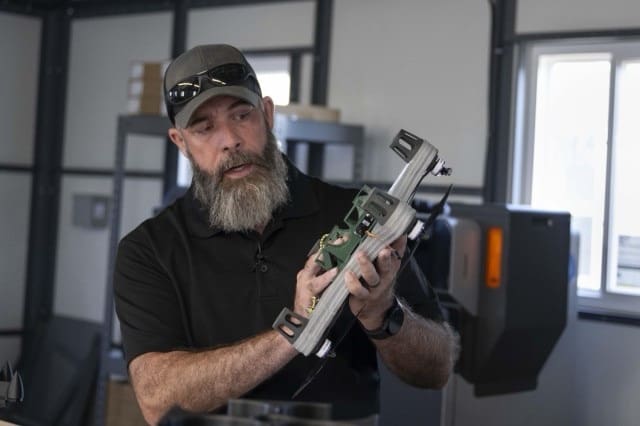
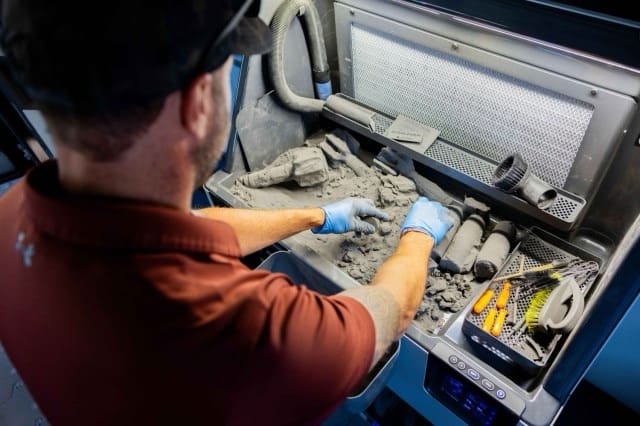
“The cost of [having] drones to shoot is unrealistic — at least $1,000 a pop. And when we’re talking 36 students a class, we can’t keep up with that cost,” explained JCU staff member Richard Stairs, who runs the compound’s 3D printing lab. “By using 3D printing, we minimalize that cost and basically cut it in half, based on what components we’re using.”
Peterson said it’s not a big team, but they are all passionate, adding, “The adaptation and innovation that they’ve been able to do on their own time … it’s remarkable what this team at the JCU is doing and will continue to do to help support the joint force.”
The JCU shares a lot of its products with DOW drone forces so they can develop their own capabilities in the future. The school also partners with federal agencies and academia and even trains foreign service members of partner militaries.
“Each country has a little bit of a different environment and theories behind [counter-small UAS strategy], so it helps give us a more well-rounded experience,” Peterson explained.
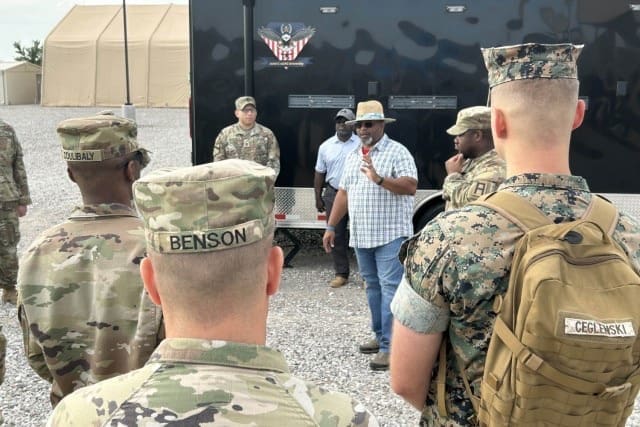
While drone warfare is perpetually changing, the school is determined to keep pace.
“We are constantly evolving — that’s with the new equipment, new threats and new student input that comes through,” said Jacob Cameron, JCU air boss. “No matter what the threat is, the JCU is adapting.”
The JCU, which became operational in 2023, falls under the Army’s 30th Air Defense Artillery Brigade. Fort Sill is home to the Army Field Artillery School, the Army Air Defense Artillery School, the 75th Fires Brigade and the 31st Air Defense Artillery Brigade, all of which have nurtured counter-small UAS strategies since the threat first surfaced.
By Katie Lange, Pentagon News


